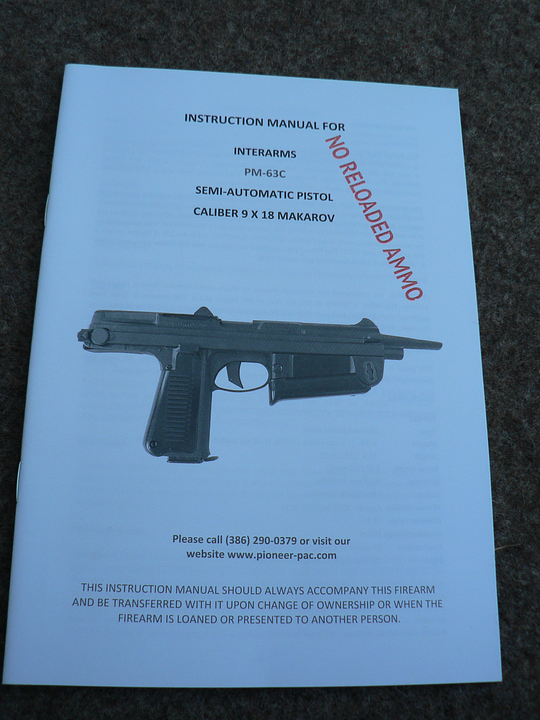Combloc
Stop Negassing me!!!!!
It's one of the new Pioneer Arms imports.

After a years long hiatus because the early ones had serious issues, Pioneer is now importing what they are unofficially calling the Gen 2 version. Where the early ones were parked, the new ones are blued just as the original PM-63 was. There is very little information about this new version out there so I plan on doing a detailed write-up about it soon. I bought this as a collectible so I don't plan on shooting it. That means I won't be able to tell you about accuracy, reliability or durability, but what I will provide is an in-depth look at the one pictured above compared to the original parts kit also shown above. While the parts kit is just that, a cut up machine pistol, it's complete so I can show you what's been done to remanufacture the Pioneer Arms offering as a legal semi-auto. As always, we'll disassemble the thing and get up close and personal with it, describing what does what, what I like, what concerns me, and my overall thoughts. I've been chasing after this "pistol" for almost ten years now so I'm eager to get into it. I think it's going to be fun and I hope you'll join me!
After a years long hiatus because the early ones had serious issues, Pioneer is now importing what they are unofficially calling the Gen 2 version. Where the early ones were parked, the new ones are blued just as the original PM-63 was. There is very little information about this new version out there so I plan on doing a detailed write-up about it soon. I bought this as a collectible so I don't plan on shooting it. That means I won't be able to tell you about accuracy, reliability or durability, but what I will provide is an in-depth look at the one pictured above compared to the original parts kit also shown above. While the parts kit is just that, a cut up machine pistol, it's complete so I can show you what's been done to remanufacture the Pioneer Arms offering as a legal semi-auto. As always, we'll disassemble the thing and get up close and personal with it, describing what does what, what I like, what concerns me, and my overall thoughts. I've been chasing after this "pistol" for almost ten years now so I'm eager to get into it. I think it's going to be fun and I hope you'll join me!









